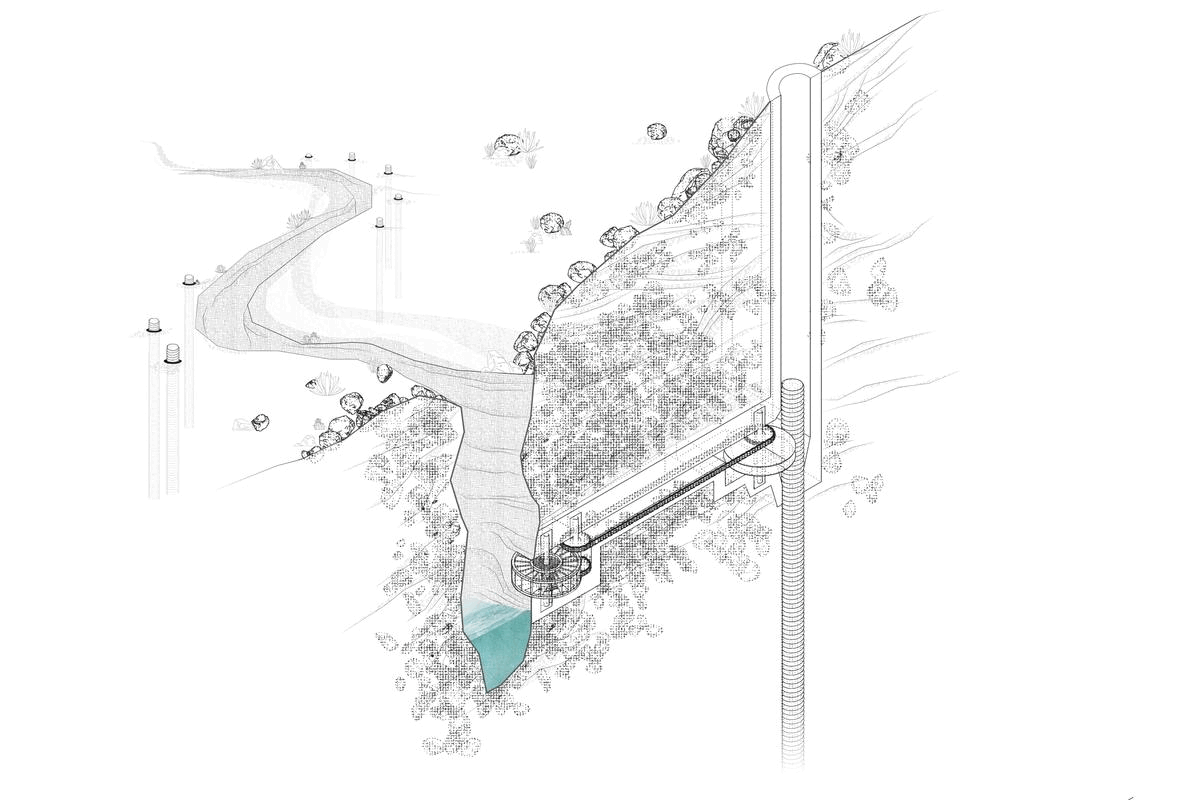
Earthly Forces:
Rethinking the Potential Energies of the Episodic, Dispersed, and Unpredictable.
The Earth is active. Mountains are violent, rivers relentless, and even the slightest movement of matter—drops of rain or grains of sand, when compounded can have exponential ramifications. Geology has a long history of being chained to the economies and ambitions of material and energy revolutions—and regimes of architecture and construction. This thesis project opposes modern desires of consistency, reliability and scalability that come at the expense of resource extraction and depletion. It imagines a world where humans might work with the rate at which the earth builds through erosion, transport, and accumulation. This research recognizes the force of water in its multitude of forms - turbulent, seeping, and crystalline. It explores ways in which the potential energies of gravity and earthly forces could create new forms of infrastructure that hold and store potential energy.
Among the many forces of nature, this thesis identifies and develops floods, rock fall, and avalanches - as forces with which design interventions can be paired. Each force can lift weight and hold mass at height as potential energy, as well as collect debris for architectural structures. By acknowledging the potential energy of earth’s forces, this project reflects on how we can begin to imagine a world where these forces are seen as sublime and productive rather than terrifying and destructive. This research project proposes we modulate our energetic use and architectural output and calibrate these with the episodic, dispersed, and unpredictable eb and flow of the Earth’s metabolism.
Co-Advised by Sheila Kennedy + Skylar Tibbits









